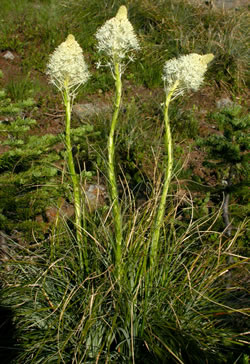Plant of the Week
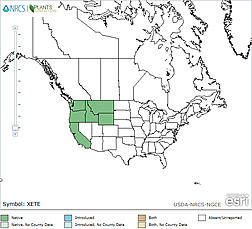 Xerophyllum tenax range map. USDA PLANTS Database.
Xerophyllum tenax range map. USDA PLANTS Database.
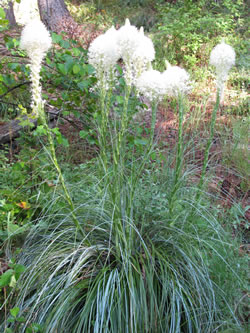 Bear-grass (Xerophyllum tenax). Photo by Barbara Mumblo.
Bear-grass (Xerophyllum tenax). Photo by Barbara Mumblo.
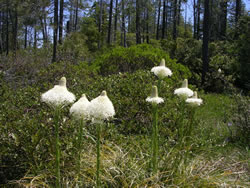 Bear-grass (Xerophyllum tenax). Photo by Jenny Moore.
Bear-grass (Xerophyllum tenax). Photo by Jenny Moore.
 Bear-grass (Xerophyllum tenax). Photo by Barbara Mumblo.
Bear-grass (Xerophyllum tenax). Photo by Barbara Mumblo.
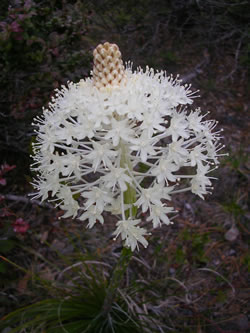 Bear-grass (Xerophyllum tenax). Photo by Jenny Moore.
Bear-grass (Xerophyllum tenax). Photo by Jenny Moore.
Bear-grass (Xerophyllum tenax)
By Russ Holmes
Bear-grass is in the Liliaceae (lily family) which contains 478 species in North America and approximately 4,200 species worldwide distributed mostly in the tropics. It is a diverse plant family and includes numerous important ornamentals, a number of important agricultural crops and has been the source of valuable pharmacopoeia. Leaves of Bear-grass are collected from wild populations and sold to the floral industry for use in floral arrangements. Bear-grass is also sought for use as an ornamental in cultivated landscapes and gardens. Collection of Bear-grass from native habitats should occur only after proper permission and permits have been obtained from the appropriate agency or land owner. The collection of entire plants from wild populations is strongly discouraged. Plants for use in landscaping or gardens should be purchased from reputable native plant nurseries or propagated from seed purchased or collected from wild plants.
Bear-grass is a stout perennial arising from a woody, tuber-like rhizome. Leaves are dull olive green and typically 2 to 8 decimeters (0.7 to 2.6 feet) long 2 to 4 millimeters (0.08 to 0.16 inches) wide, persistent, grass-like in appearance and rough to the touch. Flower stems typically range from 1.2 to 1.8 meters (3.9 to 5.9 feet) high. The inflorescence is a raceme 5 to 7 decimeters (1.6 to 2.3 feet) long. Flowers are white or cream in color and slightly fragrant. Tepals are oblong to lanceolate 6 to 9 millimeters (0.2 to 0.4 inches) long and 2 to 3 millimeters (0.08 to 0.1 inches) wide. Plants flower in spring to early summer, depending on elevation and latitude and can form highly attractive displays in their natural habitats.
The species grows from near sea level to over 2,000 meters (6,600 feet) in open coniferous woods, dry ridges, rocky slopes and clearings. It ranges over a wide geographic area in western North America extending from British Columbia south to the Sierra Nevada and Coast Range of California and east from Alberta to northwest Wyoming. It is a common occurrence in the Olympic, Cascade, northern Sierra Nevada, and Rocky Mountains.
Native Americans have long used Bear-grass for a variety of purposes. Leaves were used for basket weaving, leaf fibers for clothing and the rhizomes roasted for food. Eastern prairie tribes boiled the roots for a hair tonic and the treatment for sprains. Elk and deer forage on the flower stalks. Grizzly bears have been known to use bear-grass leaves in winter dens during hibernation. Bear-grass is capable of surviving light and moderate fire and regrowth after fire and can serve an important role in soil erosion and site revegetation.


